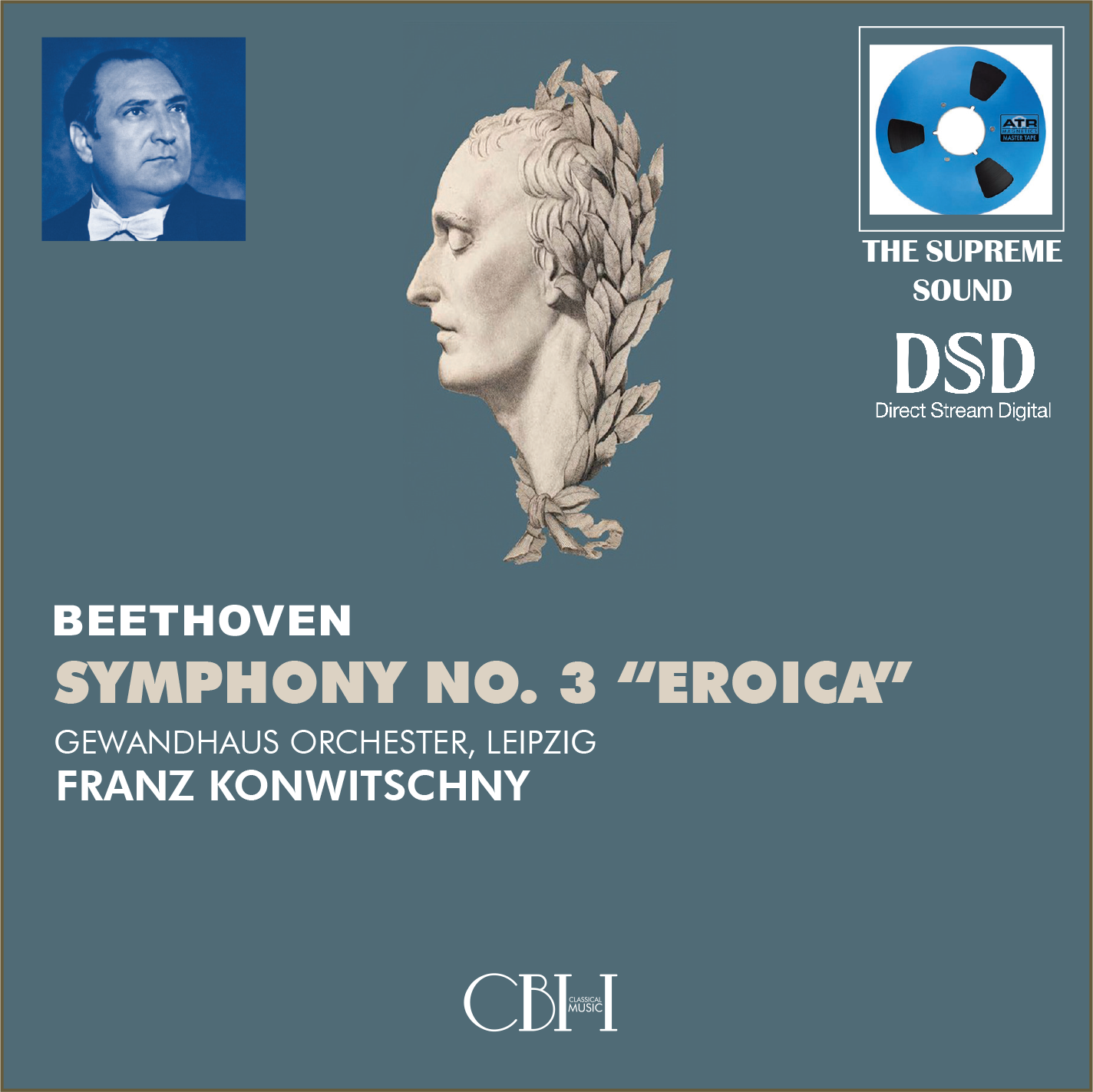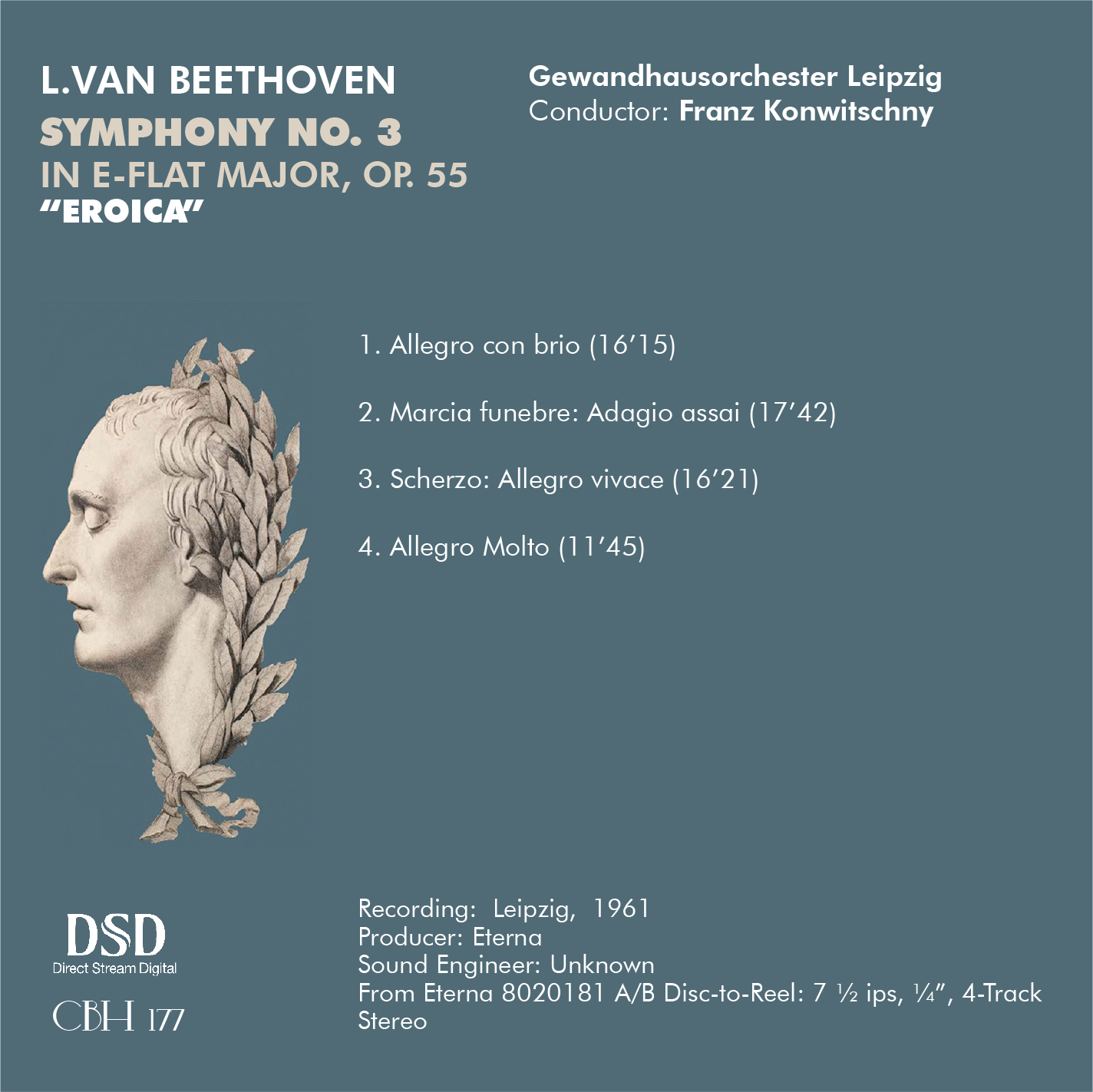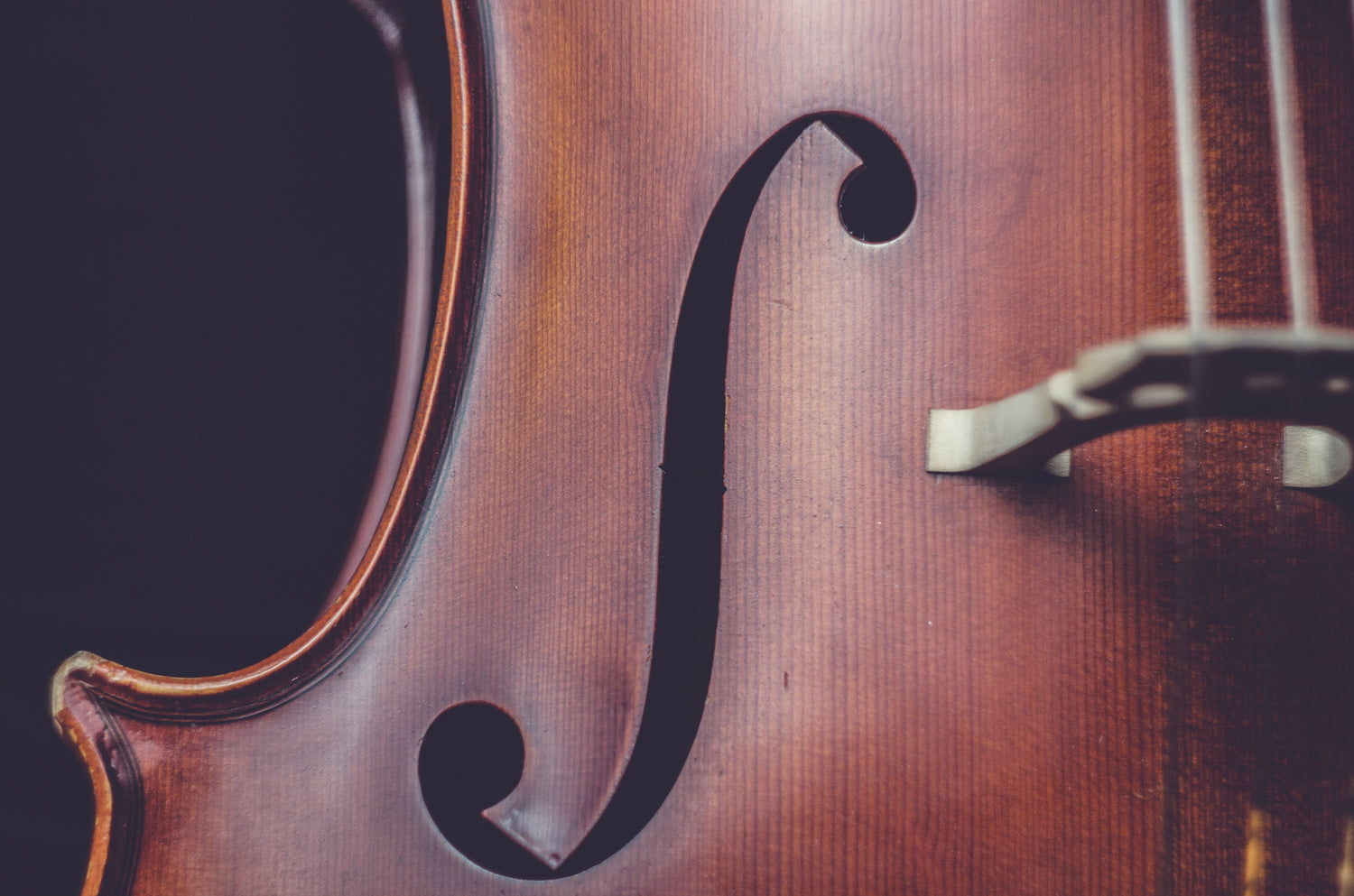Manzoni Editore
Beethoven Symphony No. 3 in E Flat Major Op. 55 “Eroica”- Franz Konwitschny Gewandhausorchester Leipzig
Beethoven Symphony No. 3 in E Flat Major Op. 55 “Eroica”- Franz Konwitschny Gewandhausorchester Leipzig
𝗖𝗕𝗛 𝗠𝗨𝗦𝗜𝗖 𝗗𝗜𝗚𝗜𝗧𝗔𝗟 𝗠𝗨𝗦𝗜𝗖 𝗢𝗡𝗟𝗬
𝗖𝗵𝗼𝗼𝘀𝗲 𝘁𝗵𝗲 𝗳𝗶𝗹𝗲 𝗳𝗼𝗿𝗺𝗮𝘁 𝗮𝗻𝗱 𝗳𝗿𝗲𝗾𝘂𝗲𝗻𝗰𝘆/𝗯𝗶𝘁
Couldn't load pickup availability
Ludwig van Beethoven: Symphony No. 3 in E Flat Major Op. 55 “Eroica” (CBH177)
- 1. Allegro con brio (16’15)
- 2. Marcia funebre: Adagio assai (17’42)
- 3. Scherzo: Allegro vivace (16’21)
- 4. Allegro Molto (11’45)
Gewandhausorchester Leipzig
Conductor: Franz Konwitschny
Recording: Leipzig, 1961.
Producer: Eterna
Sound Engineer: Unknown
Listen to sample tracks
Listen to sample tracks
The Supreme Sound
The Supreme Sound
All our historic collections feature high-quality analog recordings, restored with a method that while preserving the natural sound of the source, fully recovers the beauty of the original recording. Each of the techniques of the transcription process makes important and audible contributions to the quality of the encoded digital signal. All of this works magic that produces incredibly good audio quality that can be heard on any type of system. You will appreciate the opportunity to hear performances that are otherwise unavailable through other means. We are sure that as a lover of music and beautiful sound you will be impressed, delighted and even amazed by the recordings offered by CBH MUSIC.
What are DSD, DXD and Hi-Res AUDIO files
What are DSD, DXD and Hi-Res AUDIO files
Direct Stream Digital (DSD)
Translatable from English as direct digital stream, is a trademark registered by Philips and Sony for a system for decoding audio signals using Pulse-Density Modulation coding, a technology used to store sound signals on digital media such as Super Audio CD (SACD).
Technique
The audio signal is translated through Sigma-Delta modulation, as a sequence of single bits at a sampling frequency of 2.8224 MHz (64 times the sampling frequency of an Audio CD, equal to 44.1 kHz). Using a higher sample rate allows for noise shaping (a technique used to minimize the quantization error of audio signals by spreading it over a wider range of frequencies) to reduce the noise and distortion caused by the quantization of a single-bit audio signal. On the other hand, it is still a matter of debate how much distortion can be eliminated in a 1-bit sigma-delta conversion..
It is a digital audio format, originally developed for editing high-resolution DSD recordings, audio standards used in the Super Audio CD (SACD) format.
Technique
Since the 1-bit DSD format used on SACD is not suitable for editing, other formats such as DXD or DSD-Wide must be used during the mastering stage. Unlike DSD-Wide or DSD which offers good editing, equalization and cross-fade possibilities at the DSD sampling frequency (64 frames, 2.822 MHz), the DXD format is a PCM modulated signal with a resolution of 24 bits (8 bits more than the 16 bits used for the Red Book CD) sampled at 352.8 kHz - eight times the 44.1 kHz sampling rate of the Red Book CD. Data throughput is 8.4672 Mbit/s per channel, three times that of DSD64. DXD also uses a wide range of plugins available for PCM-based digital audio workstations, such as Cubase, Logic Studio, Digital Performer, etc. DXD was initially developed for the Merging workstation Pyramix and introduced with their Sphynx 2 analog-to-digital converter in 2004. This combination meant that it was possible to record and edit directly in DXD and that the sample was only converted to DSD once, before of the publication in SACD. This offers a huge benefit to the user, as the quantization and compression noise generated by DSD conversion increases significantly above 20kHz and more noise is generated each time a signal is converted to DSD during editing. Currently, DXD is also used as a music distribution format.
Hi-Res AUDIO
In 2014, the Digital Entertainment Group, Consumer Electronics Association and The Recording Academy, along with record companies, defined the concept of high-resolution audio (Hi-Res AUDIO) as "uncompressed or lossless compressed audio (LOSSLESS ) of higher quality than normal CD standard ". In other words, we refer to a digital audio content and the possibility of being reproduced with a sampling frequency and/or a bit depth greater than 44.1 kHz and/or 16bit.
How to play our audio files.
How to play our audio files.
Products and software that reproduce files in High Resolution
There are many software on the market for reading High Resolution files, some of which are even free. While for file decoding a large number of DACs (digital to analog audio converters) are now on the market, both commercial for home and professional use and in all price ranges; below, at the link* below, we will list some of these products.
Link: Hardware and Software to play audio files in Ata Resolution
*continuously updated.



Technical info
Copyright © & CBH Music 2023, including all aspects of compilation, transfer, remastering and restoration.
-
Frequently Asked Questions
At the link below you will find answers to most frequently asked questions.Go to frequently asked questions -


